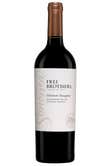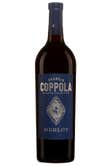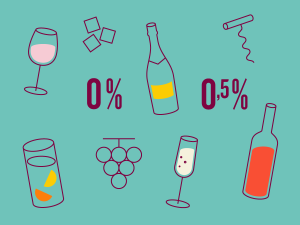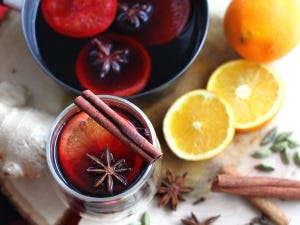Whether you choose a generous and structured red or a fruity and vibrant white, California wines and the warmth they bring are sure to add lots of pleasure to your dinners and events. Their enticing, bold aromas are reminiscent of a place where anything is possible – a place under the sun, with a cool ocean breeze, from the magnificent, elegant Napa Valley estates to the rebellious spirit of producers at the very top of the Sierra Nevada mountain range.


Diversity on the menu
Given the quantity and diversity of wines available, you can be sure to find something for every occasion. From reds or whites made using Rhône grape varieties to fruity, finessed Pinots Noirs, refreshing dry rosés, fine, elegant sparkling wines, fresh Pinots Gris, wines from recently-planted Italian or Spanish grape varieties, or Zinfandels from century-old vines, the options are endless.
In a state that is known for the quality of its fresh products and its gourmet yet healthy cuisine, having such diversity is great. A wine made from Grenache and Mourvèdre is perfect for a barbecue, whereas a Viognier pairs nicely with seafood served with a citrus and tropical fruit salsa. And how about a Muscat with peaches and whipped cream, while you’re at it?
The omnipresence and diversity of California wine is the culmination of a 250-year-old history and a continually innovative spirit. It is also a reflection of the significant production present across nearly the entire state. From the Mexican border to the volcanic mountains of the North, California produces wine all over its vast territory, from warm inland valleys to the cool Pacific coasts. In total, in 2019, some 3.3 billion bottles produced in the Golden State were sold in the United States and around the world.
This vast production from all types of soils and dozens of different grape varieties places California among the world’s largest producers, just behind France, Italy, and Spain. Wine is now part of the Californian lifestyle... and a way of life for wine lovers around the world.


New territories
The history of Californian wine dates back to 1769, when a Spanish Franciscan missionary planted vines near his mission in San Diego. In the 19th century, a series of French, English, Mexican, Italian, Hungarian, and German characters began importing Italian or French vines and founding the first commercial vineyards and wineries, including two that still exist today: Gundlach-Bundschu in 1858, and Charles Krug in 1861.
Despite a prohibition that put a stop to the original momentum, the production of Californian wine would eventually resume with renewed energy in the 60s and 70s, with flamboyant characters like the Gallo brothers and Robert Mondavi. Through their initiative, wine came to be seen as a central part of a healthy and refined lifestyle, alongside a flavourful, fresh cuisine.
The impact of the 1976 Judgment of Paris is also not to be underestimated. At the time, it created powerful shockwaves in the world of wine, when renowned experts gave top scores to a Chardonnay from Château Montelena and a Cabernet Sauvignon from Stag's Leap Cellars, ahead of a Meursault Charmes de Roulot and Château Mouton Rothschild, among others. Suddenly, the world was realizing that the vineyards of Napa and Sonoma could compete with the best châteaux in Bordeaux and the greatest estates of Burgundy.


While Napa and Sonoma are still world-renowned producers today, they account for only 11% of the wine produced in California. To understand and know California wine is to taste Grenaches and Syrahs from Paso Robles, Carignans from the Sierra Foothills, Pinots from Santa Barbara, Mendocino, Zinfandels and Albariño from Lodi, or white Chenin produced near Sacramento, for example. It also means being exposed to a wide variety of approaches, both modern and traditional. While several estates are at the cutting-edge of technology, using satellite images to assess whether their vines need watering and a computer to control the winemaking process, others brought back the large redwood fermenters used in the early days of California winemaking and do everything by hand, in the most natural way possible.
While Napa and Sonoma are still world-renowned producers today, they account for only 11% of the wine produced in California. To understand and know California wine is to taste Grenaches and Syrahs from Paso Robles, Carignans from the Sierra Foothills, Pinots from Santa Barbara, Mendocino, Zinfandels and Albariño from Lodi, or white Chenin produced near Sacramento, for example. It also means being exposed to a wide variety of approaches, both modern and traditional. While several estates are at the cutting-edge of technology, using satellite images to assess whether their vines need watering and a computer to control the winemaking process, others brought back the large redwood fermenters used in the early days of California winemaking and do everything by hand, in the most natural way possible.
To give you an idea of the progression and diversification of wine in California, it should be noted that in 1980, vineyards were found in about 30 of the state’s 58 counties. Today, they’re present in 49 counties. Similarly, there are now 140 separate AVAs (American Viticultural Areas) in California, up from about 50 in 1990, and there are now more than 4,200 wine producers, compared to less than 1,000 some 25 years ago. Winemakers are constantly expanding into new territories, looking for new flavours and creating new styles.


Growers also use sheep and alpacas or llamas to naturally control weeds as they freely graze the vineyards.
Green in many ways
For decades, California has been at the forefront of environmental laws and regulations, with approaches that often set an example at the national and international level. California's wine industry is no exception, with approaches that extend beyond the land to include caring for its people and communities.
Established in 2003, the California Sustainable Winegrowing Alliance brings together grape and wine producers from across the state to promote sustainable development strategies at all stages of production. Since 2010, this coalition has set up a certification – the Certified California Sustainable Wine (CCSW) – which appears as a distinctive medallion on bottles since 2017.
Today, 40% of California's vineyards are certified in this way, and 92% of all wine produced in the state comes from wine producers who are certified for their processing and marketing processes. The diversity of the proposed actions is rather impressive, with more than 200 types of interventions included in the program.
The certification aims to promote practices that are environmentally sound, socially equitable, and economically feasible, and thus cover all aspects of everyday sustainability, going beyond mere principles. For wineries, this means adopting a long-term vision, evaluating their environmental actions in order to protect the land, air, and water, and improve the quality of their grapes and wines, while also acting as good neighbours and members of their communities.
In the vineyard, California’s certification requires winemakers to reduce pesticide use, strengthen soil health through composting and planting a canopy, minimize water consumption, and reserve natural habitats on their properties to enhance biodiversity, for example. At the winery, producers must use renewable energy (particularly solar), reduce water consumption, and use recycled and recyclable materials, and light glass, in their packaging. Support for the community and employee health and wellbeing are also part of the program's criteria. An inventive and holistic approach typical of Californian creativity.




A California wine for everyone
Discover our selection
of Californian wines
 Access to SAQ Inspire personalized services and store inventories are unavailable at the moment.
Access to SAQ Inspire personalized services and store inventories are unavailable at the moment. Free in-store delivery with purchases of $75+ in an estimated 3 to 5 business days.
Free in-store delivery with purchases of $75+ in an estimated 3 to 5 business days. 



















